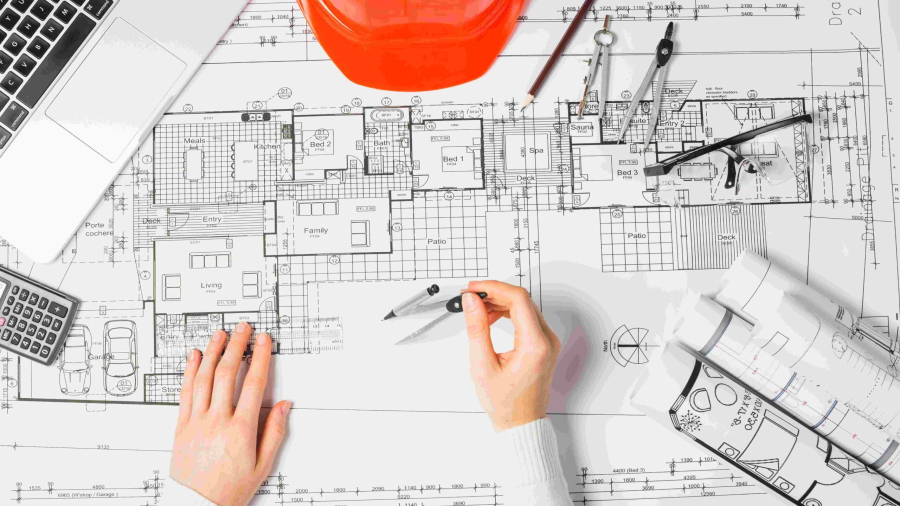Hello, dear readers! Welcome to our blog, where we dive into the latest trends and innovations in the construction industry. It’s always important to stay updated with the ever-evolving landscape of construction, as it not only ensures success in your projects but also contributes to a brighter and sustainable future. In this blog post, we will explore five exciting trends that are transforming the construction industry and paving the way for a better tomorrow.
I. Sustainable Construction:
In recent years, sustainable construction has gained tremendous momentum and for good reason. As builders and developers become increasingly aware of their environmental impact, the demand for eco-friendly and energy-efficient construction practices has surged. Sustainable construction focuses on reducing waste, conserving energy, and minimizing the overall carbon footprint.
One of the key aspects of sustainable construction is the use of eco-friendly materials. Builders now have access to a wide range of sustainable alternatives to traditional construction materials, such as recycled steel, bamboo, and reclaimed wood. Additionally, energy-efficient designs that incorporate features such as solar panels, rainwater harvesting systems, and natural ventilation are becoming more prevalent.
The benefits of sustainable construction are not limited to the environment. Builders who adopt sustainable practices often find that they can reduce their operational costs through energy savings and waste reduction. Furthermore, sustainable buildings have been shown to improve occupant health and productivity, creating a win-win situation for both builders and the environment.
II. Technology Integration:
Technology has become an integral part of our lives, and the construction industry is no exception. Advancements in technology have revolutionized the way construction projects are planned, executed, and managed. From digital tools to cutting-edge software, the integration of technology has enhanced efficiency, safety, and accuracy in construction projects.
Building Information Modeling (BIM) is one such innovation that has reshaped the construction industry. BIM allows builders to create digital representations of buildings, providing a collaborative platform for architects, engineers, and contractors to work together seamlessly. This technology reduces errors, improves communication, and streamlines the construction process.
Drones have also made their mark on the construction industry. These unmanned aerial vehicles are equipped with cameras that can capture high-resolution images and videos of construction sites. Drones enable builders to monitor progress, identify potential issues, and conduct site surveys more efficiently.
Virtual reality (VR) is another exciting technology that is making waves in construction. VR allows builders to create immersive virtual environments that simulate real-world scenarios. This technology is particularly useful in architectural design and project visualization, enabling stakeholders to experience a building before it is even constructed.
III. Modular Construction:
Modular construction is an emerging trend that is revolutionizing the building process. Unlike traditional construction methods, modular construction involves the fabrication of building components off-site in a controlled environment. These pre-fabricated modules are then transported to the construction site, where they are assembled to create the final structure.
The advantages of modular construction are numerous. First and foremost, it significantly reduces construction time and costs. Since modules are manufactured in a controlled environment, delays due to weather conditions or labor shortages are minimized. Additionally, the assembly process is faster and more efficient, leading to shorter project timelines.
Modular construction also offers enhanced quality control. The controlled environment in which modules are fabricated ensures that each component meets rigorous quality standards. This results in a higher level of precision and consistency in the final product.
IV. Smart Homes and Automation:
The concept of smart homes, powered by automation, is gaining popularity among homeowners and builders alike. Smart homes are equipped with intelligent features that allow homeowners to control various aspects of their homes, such as lighting, temperature, security systems, and entertainment, through a centralized system.
Home automation systems are at the heart of smart homes. These systems integrate various devices and technologies, allowing homeowners to control and automate daily tasks with ease. For example, homeowners can schedule their lights to turn on and off at specific times or adjust the temperature remotely using their smartphones.
Smart homes not only provide convenience but also contribute to energy efficiency. Energy management solutions integrated into smart homes enable homeowners to monitor and optimize their energy consumption. This not only reduces utility bills but also helps reduce the overall environmental impact.
Furthermore, smart homes enhance homeowners’ quality of life. With advanced security systems, homeowners can monitor their homes remotely and receive alerts in case of any unauthorized entry. Smart appliances and devices also offer features that promote safety, comfort, and accessibility for individuals with disabilities or special needs.
V. Enhanced Safety Measures:
Safety should always be a top priority in the construction industry. Advancements in safety measures have significantly improved the well-being of workers on construction sites. From safety equipment to training programs and software solutions, the construction industry is continuously striving to create safer working environments.
Modern safety equipment plays a crucial role in protecting workers from potential hazards. High-visibility clothing, hard hats, safety harnesses, and protective eyewear are just a few examples of safety gear that have become standard on construction sites. These advancements in safety equipment have helped reduce the number of accidents and injuries.
Training programs have also evolved to ensure that workers are equipped with the necessary skills and knowledge to perform their tasks safely. From on-site training to online courses, builders are investing in comprehensive training programs that cover various aspects of construction safety.
Software solutions have also emerged as powerful tools for enhancing safety on construction sites. Construction management software can track safety performance, generate reports, and identify potential risks. This data-driven approach allows builders to proactively address safety concerns and implement preventive measures.



